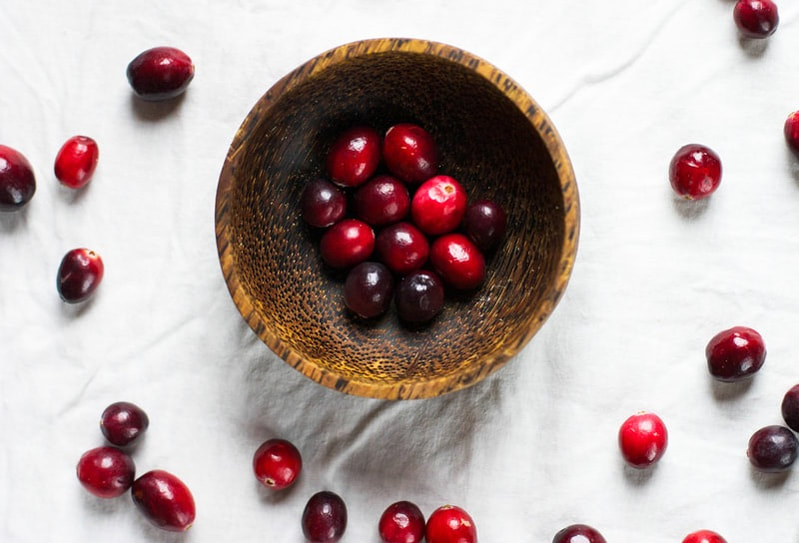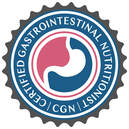|
Listen up! Cranberries are more than just a tasty side to your turkey! These bright red and tart berries are a wonderful source of polyphenols called proanthocyanidins. Proanthocyanidins, otherwise known as PACs, provide many health benefits including anti-inflammatory benefits and anti-bacterial benefits. Research has found that these PACs can inhibit bacterial adhesion to tissue, impair their motility, and inhibit biofilm formation (1). Plus, these polyphenols help encourage the growth of specific good bacteria that are essential to a thriving gut microbiome. Despite these amazing benefits, cranberries are usually just consumed around Thanksgiving and Christmas, and usually served with a huge blow of sugar. Read on to learn more about why cranberries can be a wonderful addition to a gut healing program, including my favorite cranberry products. Plus, if you make it all the way to the end, you will find a delicious recipe for a raw cranberry chutney, filled with only gut friendly ingredients. Cranberries have anti-biofilm properties against Escherichia coli and Pseudomonas aeruginosa. What are biofilms? They are colonies of bacteria that are hiding under a protective layer made of polysaccharides and therefore can persist even after antibiotic or antimicrobial treatment. Both E. coli and P. aeruginosa are common opportunist gram-negative bacteria that can cause a lot of inflammation in the gut, thriving off of a high animal protein and fat diet. They produce toxic lipopolysaccharides, LPS, that can damage cells of the gut lining and cause leaky gut. High levels may also cause abdominal cramping and loose stools (2). Cranberry juice can be used to prevent UTI’s and ulcers. How does it help? Cranberries have been found to inhibit E. coli from attaching itself to the urinary tract lining thereby inhibiting E. Coli biofilm formation (3). Similarly, cranberry juice was found to have the same inhibitory effect against H. Pylori, a common culprit to stomach inflammation and ulcer formation (4). How much juice do you need to drink? Most studies have used two cups daily for at least a month if not 2-3 months. Cranberries encourage the growth of good gut bacteria. Cranberry polyphenols have been shown to increase the growth of Akkermansia muciniphila, a bacteria that is commonly found the in human gut, feeding off of the mucus on our gut lining. Research also suggests that A. muciniphila is inversely associated with obesity, diabetes, and metabolic disorders, likely due to its anti-inflammatory role in the gut. Unfortunately, low levels (which I commonly see in my practice) are associated with a sick gut microbiome and increased inflammation. How do cranberries stimulate A. muciniphila? It seems that PACs help stimulate mucus production and therefore is likely one of the mechanisms why cranberries help encourage Akkermansia to thrive (5,6). Furthermore, cranberries seem to reduce the negative microbiome changes that are seen when humans eat a diet high in animal protein and animal fat, which is consequentially low in fiber (7). Cranberries support metabolic health. Since cranberries help inhibit the growth of inflammatory gram-negative bacteria, and help support the growth of anti-inflammatory bacteria, it comes to no surprise that they may help improve insulin sensitivity in non-diabetic obese humans thereby supporting weight loss efforts (8). Phew, that's a lot of good reasons to enjoy cranberries this holiday season! But a couple of tips first. For starters, I suggest choosing organic cranberries only, as conventional berries are high in pesticides. Secondly, choosing raw is ideal. The overly cooked sauce or the canned blob, is not going to provide the same benefits. Thirdly, if you are really looking to improve your gut health, consistency is key. Consider adding cranberries to your smoothies, salads, yogurts, etc. And finally, it’s all about the big picture. Cranberries are going to help improve your gut health much more when combined with a whole foods, low sugar, diet. Yes, that means your super sweet Thanksgiving cranberry sauce, is not the same as enjoying my raw cranberry chutney. Here are a couple of my favorite cranberry products to add into your daily routine:
Raw Cranberry Chutney Makes about 2 cups INGREDIENTS 12 oz fresh organic cranberries 1 organic orange, juice and zest ¼ cup organic maple syrup or raw local honey ¼ teaspoon Redmond’s sea salt 1 teaspoon grated peeled ginger root DIRECTIONS Rinse cranberries and strain. Pour onto a clean kitchen towel and pick out any soft cranberries. Add the fresh cranberries into a food processor. Process until finely minced. Be careful not to process it too much, because then it will become too soggy. Transfer into a large bowl and mix with orange zest and juice. Add your choice of sweetener (honey or maple syrup). Honey is a little sweeter than maple syrup, so it depends on your preference. Add the sea salt and grated ginger root (I used a microplaner). Stir until thoroughly mixed. Transfer mixture into a glass jar and allow to rest in refrigerator overnight. The chutney gets more flavorful with time. Tastes great tossed in salads, in wraps, sandwiches, mixed into yogurts, added into smoothie, or of course, along with your Thanksgiving turkey. Note: You can easily double this recipe! How are you going to start adding cranberries to your life??
Let me know! Selva
1 Comment
|
AuthorLike to read? Then get your evidence based nutrition information here! All posts written by Selva Wohlgemuth, MS, RDN Functional Nutritionist & Clinical Dietitian Archives
August 2023
Categories
All
|
Providing custom functional nutrition therapy since 2015.
Follow HBN on Social Media!
©Happy Belly Nutrition, LLC 2015-2023
Proudly powered by Weebly



 RSS Feed
RSS Feed


